Domain presentation
Château Bellevue Mondotte
Discover
The domains of the region

Château Haut-Brion
Château Haut-Brion's vineyard is located in the commune of Pessac, just a few miles southwest of Bordeaux's city center. It belongs to the Pessac-Léognan appellation, to the north of the Graves wine-growing region. The terrain at Haut-Brion, formed of two large mounds of a type of gravel known as
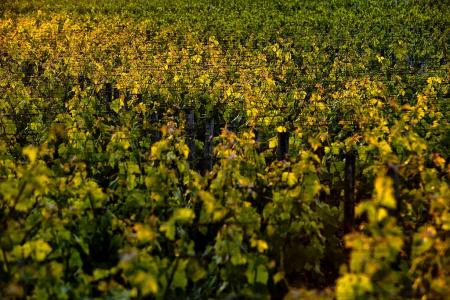
Château La Tour Haut-Brion
Elaborated by the same team as Haut-Brion and La Mission Haut-Brion, of which he was for long the second time, La Tour Haut-Brion offers the same style of his elder. Cru Classé of Graves in 1953 (appellation Pessac-Léognan), the vineyard was united to the one of La Mission Haut-Brion in 2006, and al

Château La Mission Haut-Brion
Château La Mission Haut-Brion's vineyard straddles the commune of Talence and Pessac and is located only a few miles southwest of Bordeaux's city center. It belongs to the Pessac-Léognan appellation, to the north of the Graves wine-growing region. The property is situated just opposite that of C

Château Quintus
Established in 2011, Château Quintus is an age-old vineyard with an extraordinary past, present and future. Its history is closely linked to that of Saint-Emilion, one of the oldest winegrowing areas of the region. Perched on a limestone promontory, culminating at an altitude of 62 metres, Quintus o
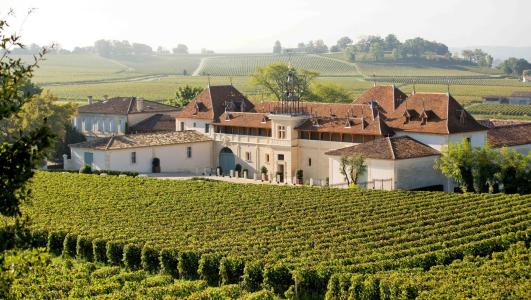
Château Angelus
Château Angelus is a First Growth rated A in the 2012 Saint-Emilion Classification. This 39 hectares Estate has been owned for eight generations by the Boüard de Laforest family. The grape varieties are 51% Merlot, 47% Cabernet Franc and just 2% Cabernet Sauvignon. The specificity of Château Angelus
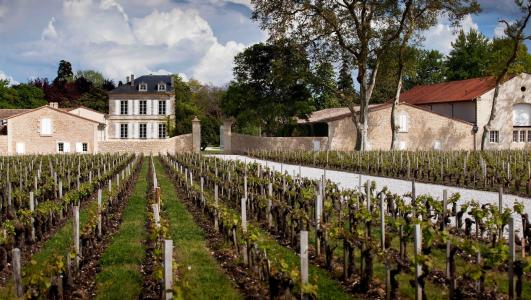
Château d'Armailhac
The Armailhac Estate dates back to the 18th century, and is located north-west of the Pauillac Appellation. Its 50 hectares vineyard covers 3 different ground types that provide great complexity to the wine. The Grape varieties are 53% Cabernet-Sauvignon, 34% Merlot, 11% Cabernet-Franc and 2% Petit-
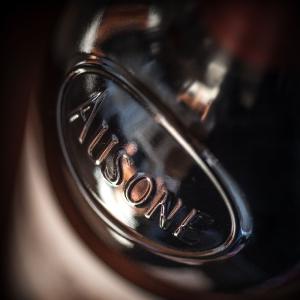
Château Ausone
In Saint Emilion, Ausone is a flamboyant jewel, actually the only Estate (with Cheval Blanc) to have been ranked Premier Grand Cru classé A in the 1855 Classification. The seven hectares Estate boasts a precious vegetal heritage: a collection of cabernet francs, in massal selection, planted at mid-
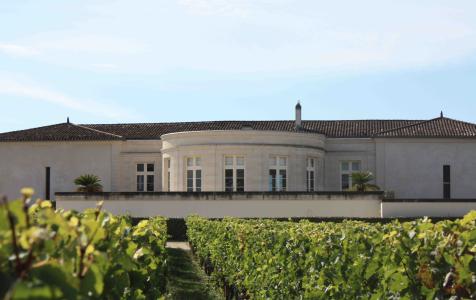
Château Beau-Séjour Bécot
Château Beau-Séjour Bécot, owned by Gérard and Dominique Bécot, has 16.52 hectares of vines (70% Merlot, 24% Cabernet Franc, and 6% Cabernet Sauvignon). Grapes from each plot are separately fermented and the wine is (mostly new) oak barrels for 18 months.
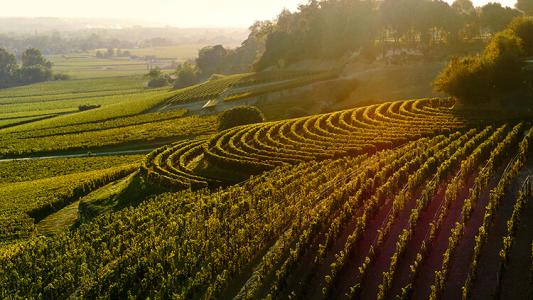
Château Belair-Monange
In Saint-Emilion, this Premier Grand Cru Ranked B has been owned by Edouard Moueix since 2012. Château Magdelaine's vineyard is now part of the blend of Belair Monange: this vegetal heritage has without a doubt been key for this Estate to embody the renewal of the Appellation. The merlots (composing
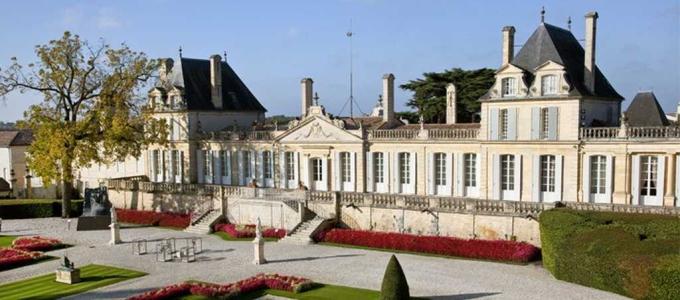
Château Beychevelle
Château Beychevelle is a Fourth Growth in the 1855 classification, on the Appellation Saint-Julien. The name originates from the fact that 17the century boats sailing in front of the then Guyenne Governor’s chateau had to salute by lowering their sails. The current owner is the Castel Group (50%), i
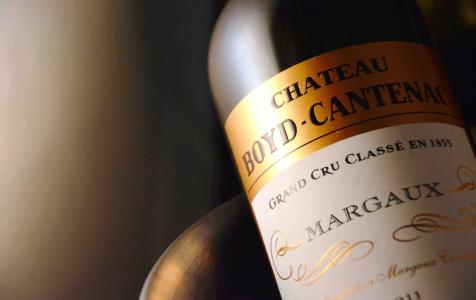
Château Boyd Cantenac
Château Boyd-Cantenac, with 17 hectares of (mostly Cabernet-Sauvignon) vines dates back to 1754 when Jacques Boyd acquired this estate in the commune of Cantenac. The château has belonged to the Guillemet family since 1932. They continue to produce great wine that represents the best of the Margaux
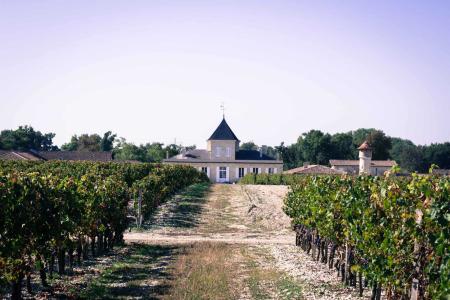
Château Brane-Cantenac
Château Brane-Cantenac is a Second Growth in the 1855 Classification of Bordeaux Wines. It is located on the Margaux Appellation, and run by Henri Lurton. This 75 hectares vineyard is planted with 65% Cabernet-Sauvignon, 30% Merlot and 5% Cabernet-Franc. Since 2007, some Carmenere vines have been re
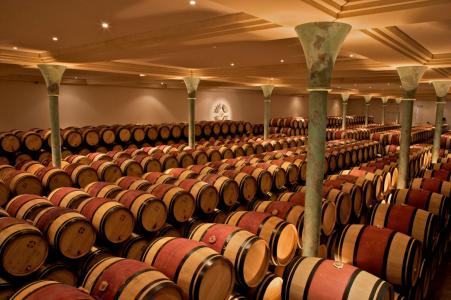
Château Branaire-Ducru
Château Branaire-Ducru is a Saint-Julien Appellation fourth growth in the 1855 classification of Bordeaux wines. Since Patrick Maroteaux took over in 1988, now assisted by his son François-Xavier, major efforts have been achieved in order to improvethe quality and regularity of the wines. Dominiqu
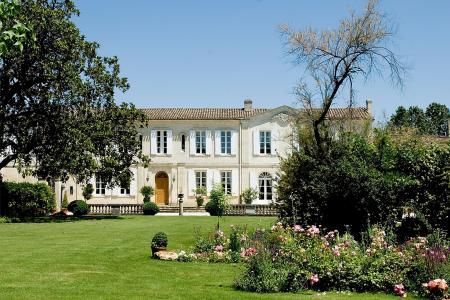
Château Canon la Gaffelière
Owned since 1971 by comte Joseph-Hubert von Neipperg, Château Canon la Gaffelière is a First Growth ranked B in the 2006 Classification of Saint-Emilion wines. Certified bio in 2014, the vineyard is planted with 55% Merlot, 37% Cabernet Franc and 8% Cabernet Sauvignon. With the help of wine consulta
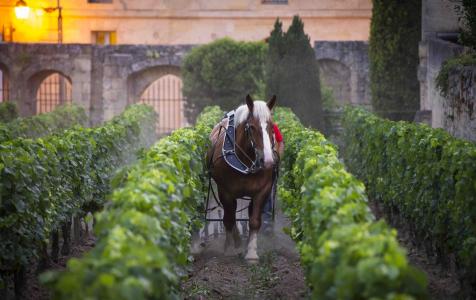
Château Canon
Château Canon is a First Growth, ranked B, in the 2006 Classification of Saint-Emilion wines. With one of the finest terroir of the Appellation, the Estate covers 34 hectares, planted with 75% Merlot and 25% Cabernet-Franc. Owned by the Wertheimer family, it is run by Nicolas Audebert, who has been
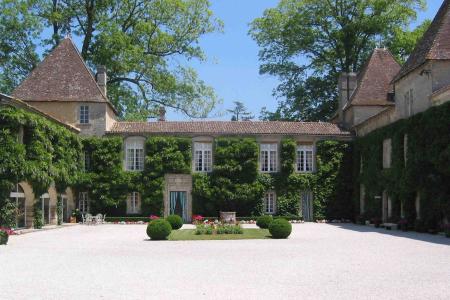
Château Carbonnieux
Château Carbonnieux is one of the oldest estates in the Bordeaux region. Ramon Carbonnieux, owner of vineyards in 1234, gave his name to this estate. Today, Eric and Philibert Perrin run the family estate. The vineyard covers 92 hectares, 60% of which are planted with Cabernet-Sauvignon, 30% Merlot,
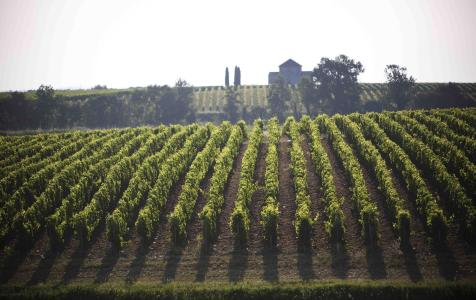
Château Calon Ségur
Château Calon-Ségur is a Third Growth on the appellation Saint Estèphe, owned since 2012 by Suravenir Assurances, a subsidiary of Credit Mutuel. The 55 hectares of vineyard are planted on a graves soil, with a limestone subsoil. The Cabernet Sauvignon is dominant in the style of these powerful wines
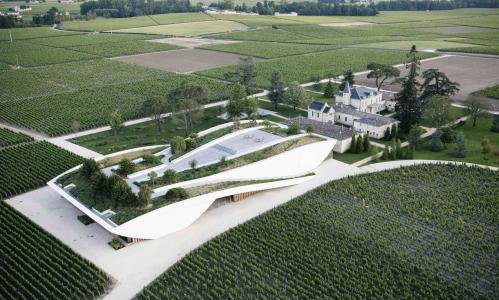
Château Cheval Blanc
Château Cheval Blanc has belonged to Albert Frère and Bernard Arnault since 1998. This world-famous estate is managed by Pierre Lurton, a well-known figure in Bordeaux. Cheval Blanc's 39 hectares of vines are located in Saint-Emilion, on the border with Pomerol. The breakdown of grape varieties is q
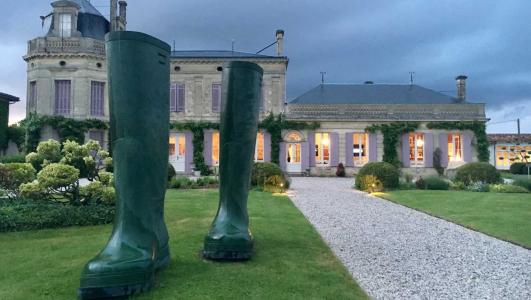
Château Chasse Spleen
Château Chasse-Spleen is an 80 hectares Estate, located in Moulis-en-Médoc. The grape varieties are 73% Cabernet-Sauvignon, 20% Merlot and 7% Petit Verdot. The wines of this emblematic Cru Bourgeois are aged 18 months in oak barrels.
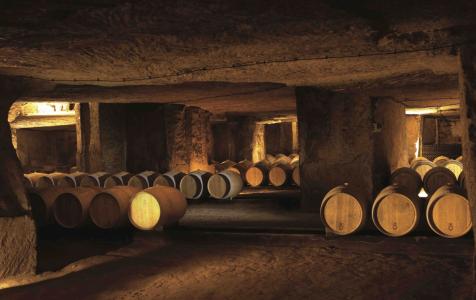
Clos Fourtet
Clos Fourtet, Saint Emilion Premier Grand Cru Classé, has belonged to the Cuvelier family since 2001. The 20-hectare vineyard (in the process converting to biodynamic viticulture) is ideally situated on the outskirts of the medieval town, on the famous limestone plateau. Merlot is the main grape var
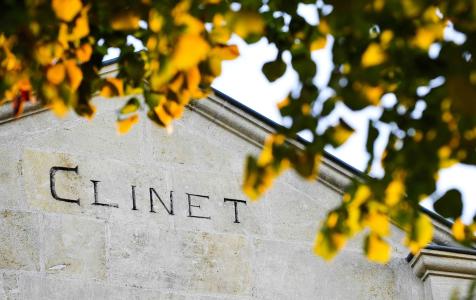
Château Clinet
The Laborde family acquired Château Clinet, one of the greatest wines of Pomerol, in 1998. This small vineyard features clay soil on a thick layer of gravel with the following grape varieties: 90% Merlot, 9% Cabernet Sauvignon, and 1% Cabernet Franc. The wine is aged for 16 months in new barrels.
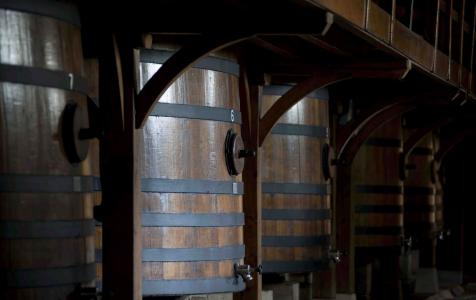
Clos du Marquis
Created in 1902 by the Delon family, who remain the owners, Clos du Marquis is a small walled vineyard close to Léoville las Cases. Formerly considered the second wine of Las Cases, Clos du Marquis is more accurately a first wine with more Merlot than its neighbours in Saint Julien. The wine is fer
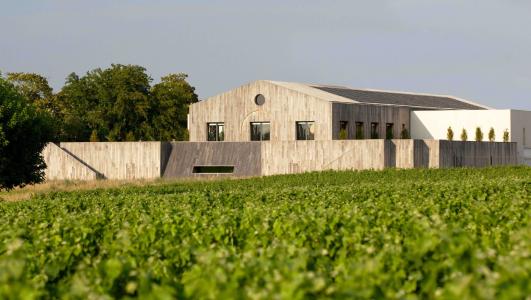
Château Clerc Milon
Château Clerc Milon is a Fifth Growth of the Appellation Pauillac. The 41 hectares Estate is owned by Domaine Baron de Rothschild, and is planted with 50% Cabernet Sauvignon, 37% Merlot, 10% Cabernet Franc, 2% Petit Verdot and 1% Carménère. This is a powerful, fruity and structured winethat develops
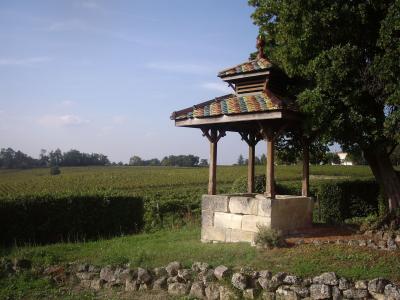
Clos Saint-Martin
The Clos Saint Martin is the smallest Estate of all Saint-Emilion Grand-Crus. Its vineyard only covers 1,33 hectare, and the blend consists in 75% Merlot, 15% Cabernet Franc and 10% Cabernet Sauvignon. Managed by Sophie Fourcade, the Clos Saint Martin produces an elegant wine, with supple tanins and
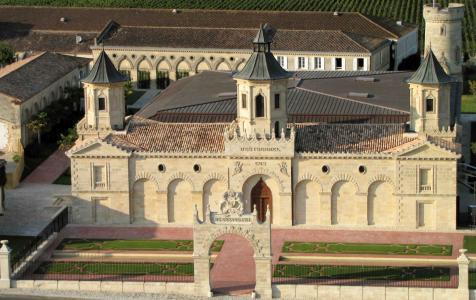
Château Cos d'Estournel
Château Cos d'Estournel is a Second Growth on the Saint Estèphe appellation. Founded originally by Louis-Gaspard d'Estournel, it has been the property of Michel Reybier since 2000. The Estate consists in 91 hectares of vineyards, planted with Cabernet Sauvignon and Merlot on graves soils of Günz. A
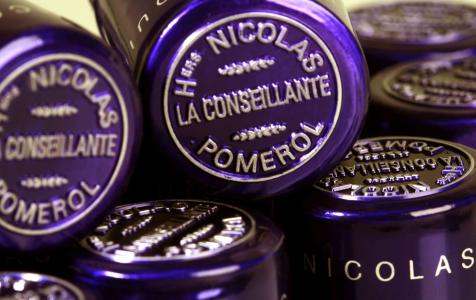
Château la Conseillante
This excellent family-owned estate in Pomerol is jointly managed by Bertrand Nicolas and Jean-Valmy Nicolas. The 12 hectares of vines consist of 80% Merlot and 20% Cabernet Franc. The wine is fermented in a state-of-the-art vat room and then aged in French oak barrels (50-80% new) for an average of
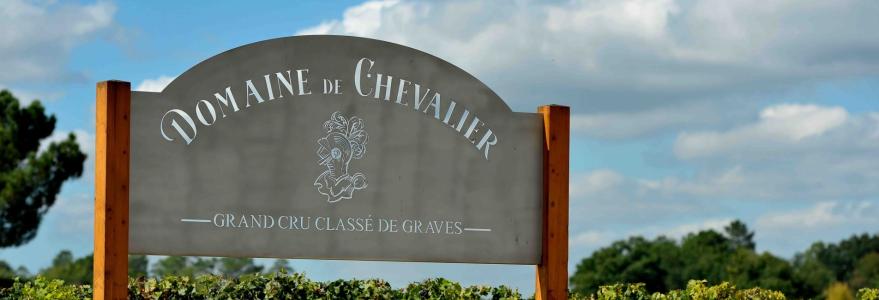
Domaine de Chevalier
The Domaine de Chevalier is located in Léognan, the Capital town of the Graves Region, with a long history. It appears on the famous map of Pierre de Belleyme in 1783. In 1983 the estate was purchased by the Bernard Family, and a major negociant of premium Bordeaux wines. It has been run ever since
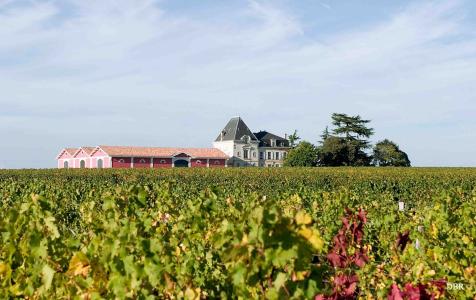
Château L'Évangile
The Vinyeard of L'Evangile spread over 16 hectares on the Pomerol appellation, on limestone soils. It is planted with 80% Merlot, and 20% Cabernet Franc. Owned since 1990 by Domaines Baron de Rothschild, it is run by Charles Chevallier. Since 2004, a new cellar and new vats allow fragmented vinifica
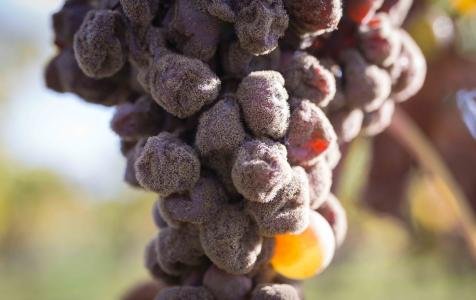
Château de Fargues
Owned by the Lur Saluces family, the château de Fargues is a medieval fortress located on the city of Fargues, in the Sauternes Appellation. Alexandre de Lur Saluces has been managing the Estate since the passing of Bertrand, his uncle, in 1968. The Estate consists in 20 hectares, with the most qual
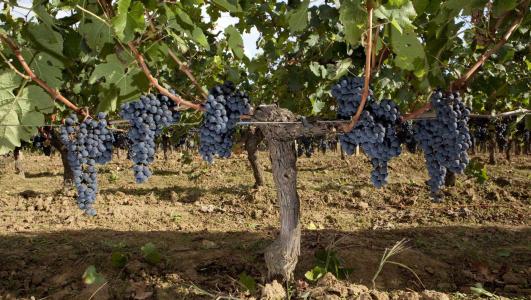
Château de Ferrand
The Château de Ferrand is a Saint Emilion First Growth, in the 2012 classification. Pauline Bich has been managing the Estate since 2005, after her Father, and with her husband Philippe Chandon-Moët. Important works were then started in the vineyard and in the cellars, to achieve a remarkable qualit
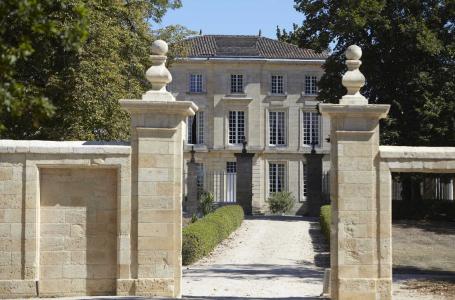
Château Figeac
Château Figeac is a Saint Emilion First Growth. Owned by the Manoncourt family, it has been run since 2013 by Frédéric Faye. Its 40 hectares vineyard produces a remarkably atypical blend, with 35% Cabernet-Sauvignon, 35% Cabernet-Franc and only 30% Merlot. The vines are run with reasoned agriculture
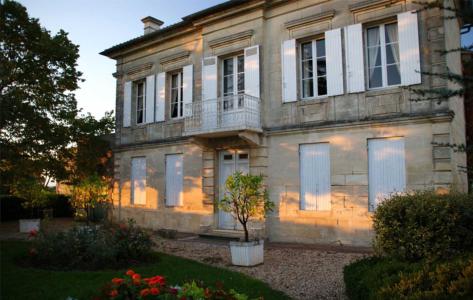
Château la Fleur de Gay
After the passing of her mother Geneviève Raynaud in 2009, her daughter Chantal offered to carry on the family tradition. Located on the high bank of Pomerol, the 2 hectares of vineyard are planted with 85% Merlot and 15% Cabernet-Franc. The 3 historic slots are run independently, in order to produc
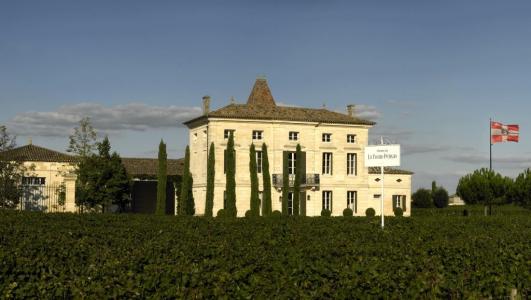
Château La Fleur-Pétrus
An Estate owned by the Etablissements Jean-Pierre Moueix, Château La Fleur Petrus is run by Christian Moueix, assisted by his son Edouard. Since 2007, the technical manager has been Eric Murisasco, with the advise of Jean-Claude Berrouet. The vineyard spreads over 14,5 hectares, with a blend of 80%
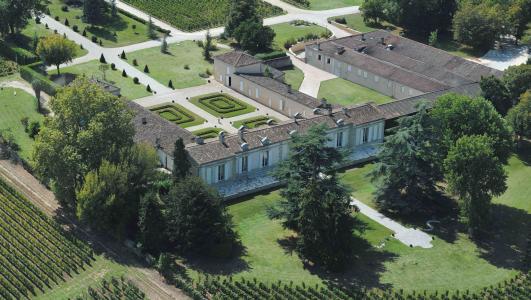
Château Fombrauge
Château Fombrauge’s vineyard covers 58 hectares. Since it was bought by Bernard Magrez in 1999, heavy investments have been realized, and the Estate was ranked Saint-Emilion Grand Cru in the 2012 classification, thereby gratifying the dedication and efforts of Mr Magrez and his team. The vineyard is
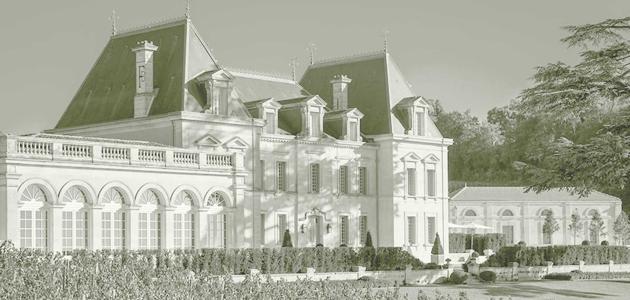
Château Fonplégade
In ownership of the Adam's family since 2004, Château Fonplégade's vineyard spreads across the hill and the plateau of Saint Emilion. The 18 hectares, planted in majority of merlot have been managed following organic viticulture principles, and got the certification in 2013. These past few years, ev
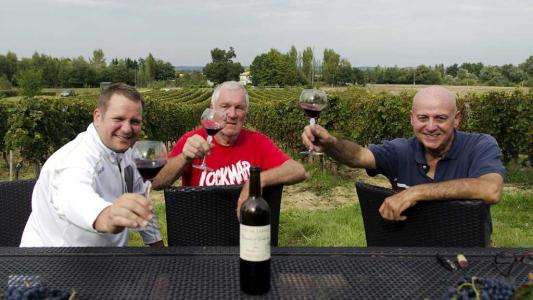
Domaine de Galouchey
On the Dordogne'banks, seven kilometers from Libourne, blossoms the small wine estate of Galouchey. The vineyard, which faces Saint Emilion and Pomerol, takes roots in 2002 on lands completely free from any chemical fertilizer: enough to make a wonderful "garden wine", on a human scale. Their team
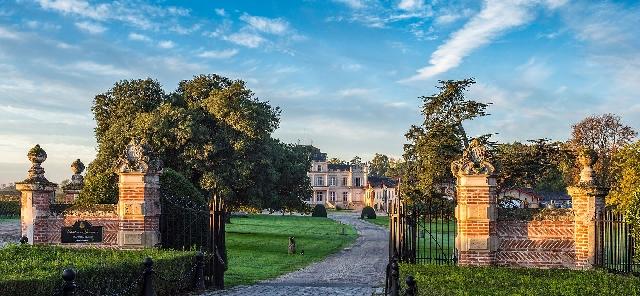
Château Giscours
Château Giscours, formerly named the noble house of "Guyscoutz", is located ayt the heart of the margaux appellation. The soils here are filled with gravels, from the Pyrénnées mountains, and later from the Garonne, give their true expressions to cabernet sauvignon and merlot. The history of the Es
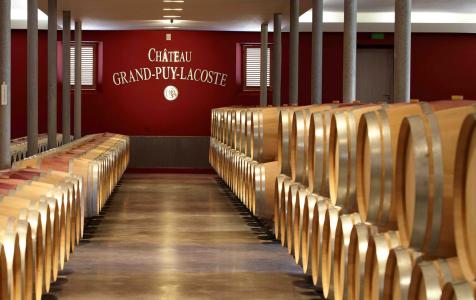
Château Grand-Puy Lacoste
Founded in the 16th century, Grand Puy Lacoste is a 5th Growth of Pauillac. Owned by the Borie family, it has been run since 1998 by François-Xavier Borie. Its 55 hectares vineyard is planted for 55% Cabernet Sauvignon, 25% Merlot and 5% Cabernet Franc. After a fermentation in inox tanks, the wine a
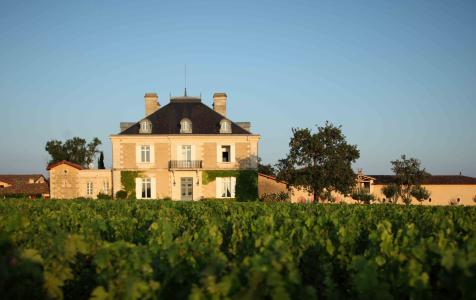
Château Haut-Bailly
The Château Haut-Bailly is a Classified Growth of Graves, on the appellation Pessac-Léognan. Taken over in 1998 by the American banquer Robert Wilmers, he chose to maintain first Jean Sanders, then his daughter Véronique to run the Estate. 28 hectares of vineyards are planted with 65% Cabernet-Sauvi
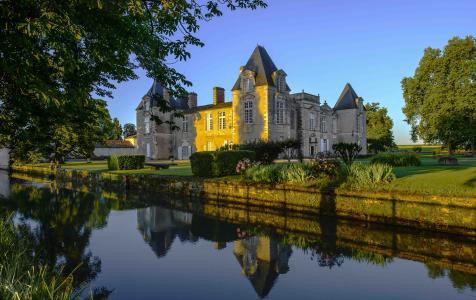
Château d'Issan
A Third Growth on the Margaux appellation, the Château d'Issan is a 53 hectares Estate, on a Graves soil. The vineyard is planted with 65% Cabernet-Sauvignon, and 25% Merlot. The Cruse family is now co-owner with Mr Lorenzetti, and Emmanuel Cruse has been running the Estate since 1996.
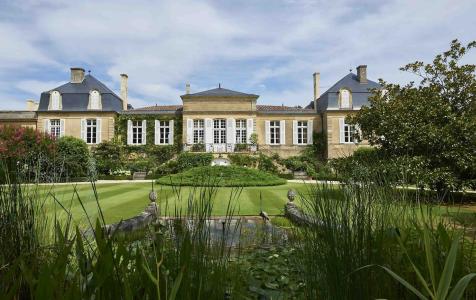
Château Langoa-Barton
Château Langoa-Barton is a Third Growth of the Saint Julien appellation. It was taken over in 1821 by Hugh Barton and remained in the Barton family ever since: it is now run by Anthony Barton. The 15 hectares vineyard is planted with 70% Cabernet-Sauvignon, 20% Merlot, 8% Cabernet Franc and 2% Petit
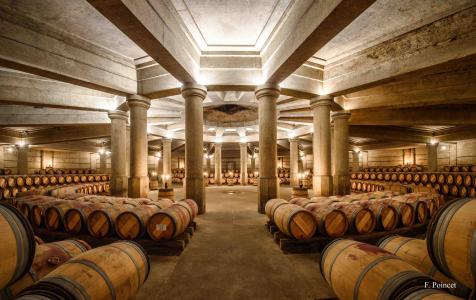
Château Lafite Rothschild
Château Lafite Rothschild is a First Growth in Bordeaux, on the appellation Pauillac. The 112 hectares vineyard is planted with 70% Cabernet-Sauvignon, 25% Merlot, 3% Cabernet Franc and 2% Petit Verdot. The wine matures about 18 months in oak barrels, 100% new ones. The oldest vines date back to 188
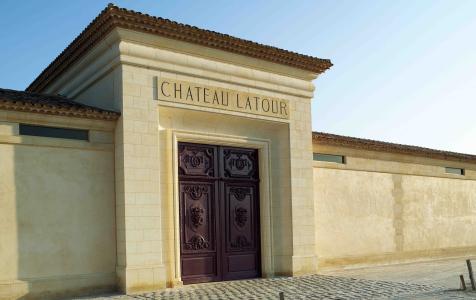
Château Latour
Château Latour is a First Growth in Pauillac. The Estate covers 95 hectares in total, including 47 hectares for the "Enclos", that encircles the Castle and produces grapes for the great wine. Planted with 76% Cabernet Sauvignon, 22% Merlot, 2% Petit Verdot, the blend is masterfully adapted depending
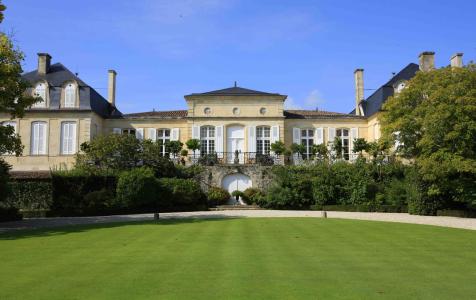
Château Léoville Barton
A Second Growth on the appellation Saint Julien, le Château Léoville Barton is owned by one of the oldest families in Bordeaux. It is now run by Anthony Barton and his daughter Lilian Sartorius-Barton. The technical director is François Bréhant and the advisor Eric Boissenot. The 48 hectares vineyar
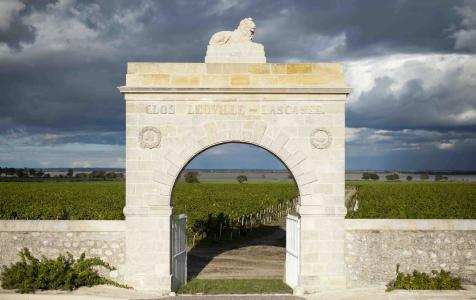
Château Léoville las Cases
A family owned Estate since the 19th century, the Château de Léoville Las Cases is a Grand Cru Classé of the appellation Saint Julien. The current manager is Jean-Hubert Delon, sole owner. The vineyard being a grouping of several ancient estates, Léoville las Cases produces two great wines, each on
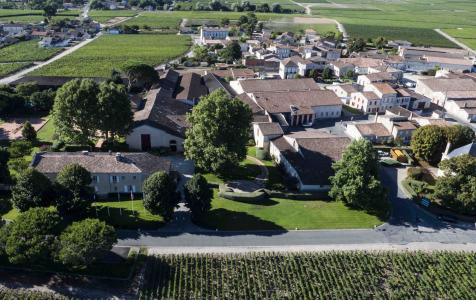
Château Lynch Bages
Fifth Grand Cru Classé on the appellation Pauillac, Château Lynch Bages has been owned by the Cazes family for three generations. The 100 hectares vineyard is laid out on gravel soil. It is now composed with 73% Cabernet Sauvignon, 15% Merlot, 10% Cabernet Franc and 2% Petit Verdot. Lynch-Bages rece
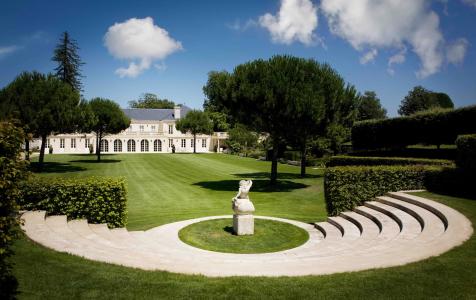
Château Malartic-Lagravière
An Estate owned by the Bonnie family for 3 generations, the Château Malartic Lagravière has acquired new infrastructures, in order to keep increasing their standard for high quality wines. The new vats are now charged with gravity, and separate vinifications are now tailored for each slot. The wines
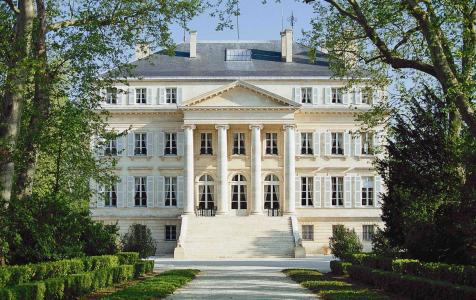
Château Margaux
Château Margaux is a First Growth of the appellation Margaux. 82 hectares of vines are reserved for the reds, with 75% Cabernet Sauvignon, 20% Merlot, 5% Cabernet Franc and Petit Verdot. Mme Corinne Mentzelopoulos has been owner and manager for more than 30 years, and Philippe Bascaules was recently

Château Montrose
The Château Montrose is a Second Growth of Saint Estèphe. The Bouygues family took over from the Charmolüe family in 2006, and immediately started a modernization of the Cellars. Hervé Berland, manager of the Estate, also handles the current conversion of the vineyard to bio and biodynamie. The Mont
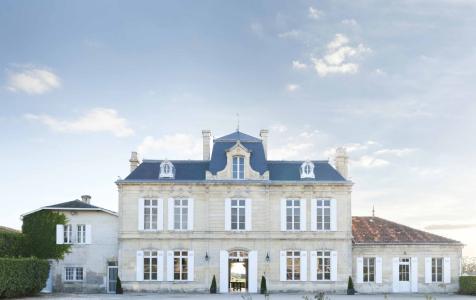
Château Nenin
Château Nenin is located on the Pomerol appellation, and its vineyard covers 32 hectares. It is planted with 78% Merlot, 21% Cabernet-Franc and 1% Cabernet-Sauvignon. Jean-Hubert Delon took over the Estate from the Despujol family in 1997, and has led a complete modernisation since. A strict selecti
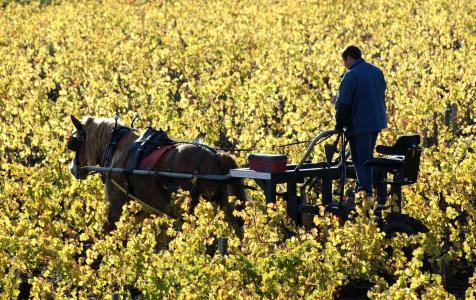
Château Pontet-Canet
Château Pontet Canet is a Fifth Growth on the Pauillac appellation. The 81 hectares vineyard is planted with 62% Cabernet-Sauvignon, 32% Merlot, 4% Cabernet-Franc and 2% Petit Verdot. The owner Alfred Tesseron initiated great transformations in the vineyard with his regisseur Jean-Michel Comme. A un
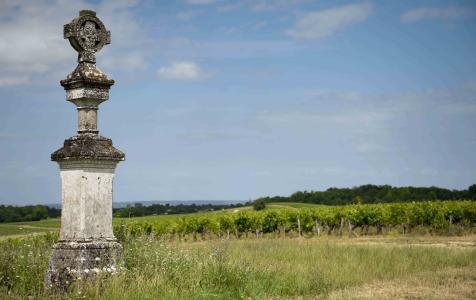
Château Potensac
Château Potensac was always owned by the same family, and the current owner is Jean-Hubert Delon. Located west of the city of Ordonnac, the 84 hectares vineyard is planted with 35% Cabernet Sauvignon, 46% Merlot, 16% Cabernet Franc, 2% Carménère and 1% Petit Verdot. Some plots of Cabernet-Sauvignon
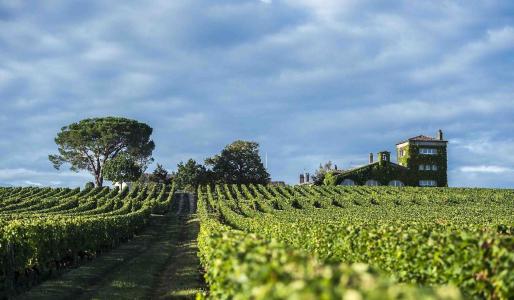
Château Rieussec
Château Rieussec is a First Growth of the Sauternes appellation in the 1855 classification. Baron Eric de Rothschild has been the owner since 1984, and opened an association with the Dassault family in 2011. Château Rieussec’s vineyard spreads over 93 hectares, planted with 90% Semillon, 7% Sauvigno
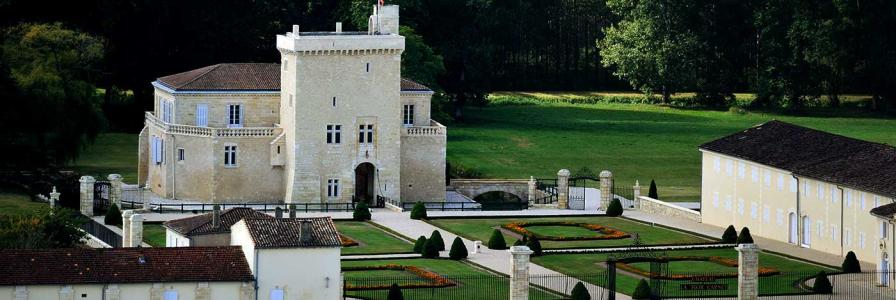
Château La Tour Carnet
The quadrangular tower of Château La Tour Carnet gives its name to the famous wine of Haut Médoc. Set with vines since the twelfth century, the vineyard enters, on the occasion of the universal exhibition of Paris, directly into the classification of the Grands Crus of 1855. The vines are now the
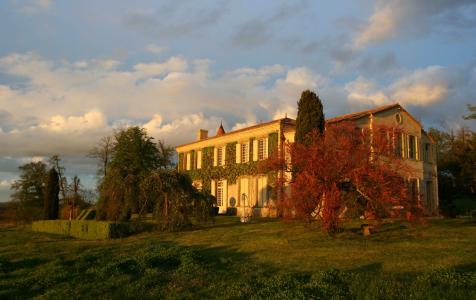
Château Troplong-Mondot
Château Troplong-Mondot is truly special place, where family traditions of sharing and of welcoming warmly are essential. Owned by the Scor group since 2007, this XVIIIth century Estate cultivates its identity with character and elegance. This ensemble offers both the renowned wines, and the ideal s
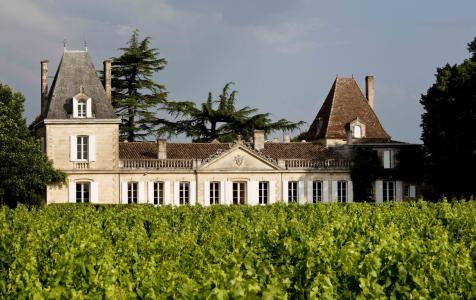
Vieux Château Certan
Vieux Château Certan is one of the oldest Estates of the Pomerol Appellation. It that has been owned for more than a century by the Tienpont, a family particularly respected in Bordeaux. Guillaume Thienpont, oenologue, joined his father in 2011 to run the Estate. The 14 hectares vineyard in planted
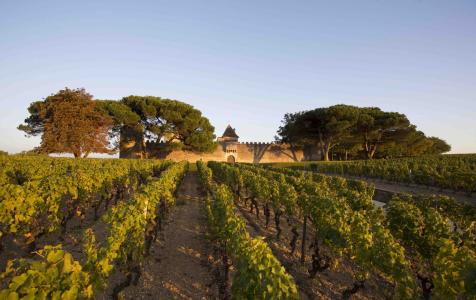
Château d'Yquem
Yquem is the only First Growth in the Sauternes Appellation. The 113 hectares of vineyard are laid out over different ground structures that in turn confer a unique complexity to the great liquorous wine. The wine is aged three years in barrels, during which the levels are re-adjusted weekly. The fi

Domaine de l'Aurage
In 2006, wine experts Caroline and Louis Mitjavile took over Château de Cadet, later renaming it Domaine de l'Aurage. This rare acquisition of 19 hectares is located in the Castillon terroir. The Domaine de l'Aurage is an addition to the couple’s wine estate, who also run Château Tertre Roteboeuf in
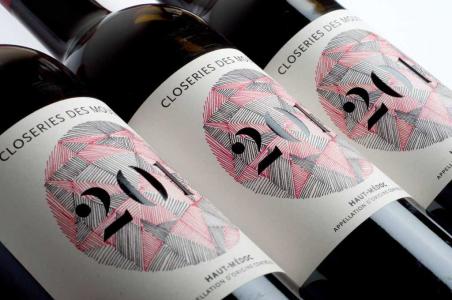
Les Closeries des Moussis
In such a vast landscape as the Haut-Médoc, the Closeries des Moussis certainly does not stand out by its size. As a matter of fact, the micro-estate hardly reaches 1.8 hectares. The vines are divided in between two appellations: Haut-Médoc for the majority and 0.2 ha in Margaux. The estate is owne


